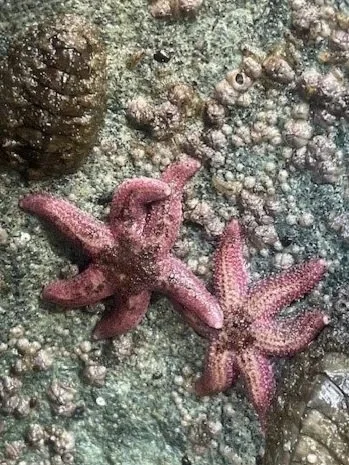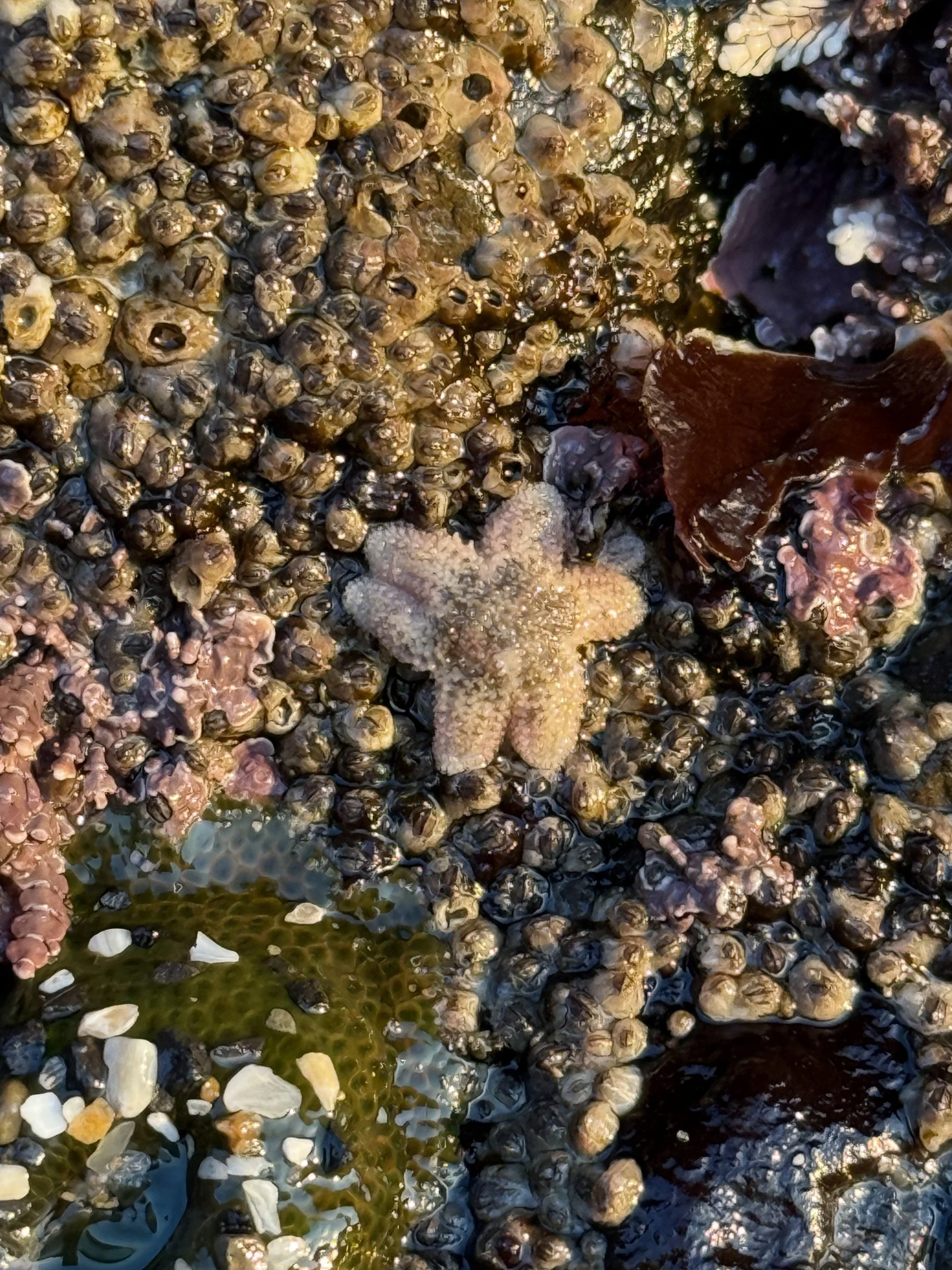Six-Rayed Sea Star (Leptasterias hexactis)
Two six-rayed sea stars (photo credit: Brenda Holmes-Stanciu)
Baby six-rayed sea star (photo credit: Emma Corliss)
Description: Six-rayed sea stars, like their name suggests, have six rays. They are quite small, only reaching a maximum diameter of 10 cm. They range in color from grey, pink, purple, and orange, and have white spines (ossicles) along the center line of each arm. There is normally some pattern to their coloration, either a darker center or a mottled appearance with dark spots on the arms and center.
Habitat: Six-rayed sea stars range southward to the Channel Islands, California. Their northward range varies by source as either British Columbia, Canada or the Aleutian Islands, Alaska. They are typically found in sheltered rocky intertidal zones often in small beds of mussels or under/in cracks of rocks.
Diet: The diet of six-rayed sea stars mainly consists of gastropods, such as snails and sea slugs. They will also eat small mussels, chitons, barnacles, sea cucumbers, and limpets.
Tide Pool Tidbits:
Female six-rayed stars keep their eggs underneath them until they hatch, protecting them from predators. They can have 50-1,500 eggs in one brood. Since their mouth is on their underside, the female won’t eat while brooding her eggs.
Baby six-rayed stars move away from their mother when they’re only about 2 mm across!
References: Walla Walla University, The New Beachcomber’s Guide to the Pacific Northwest by J Duane Sept



